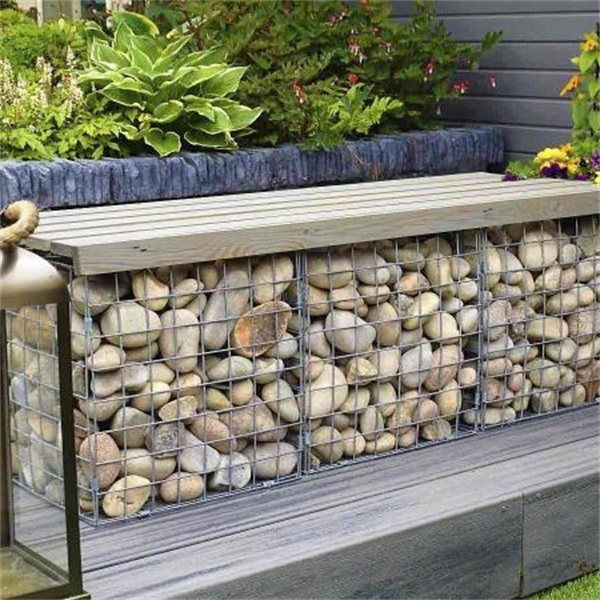Јул . 28, 2024 18:20 Back to list
Explore Affordable Gabion Wall Options for River Rock Construction and Landscaping Projects
The Advantages of Using Gabion Walls for River Bank Protection
In recent years, the issue of riverbank erosion has become increasingly prominent, affecting both natural ecosystems and human settlements. One effective solution that has gained traction is the use of gabion walls constructed from river rock. These versatile structures not only provide robust protection against erosion but also blend seamlessly with the natural environment. This article will explore the benefits of using gabion walls, specifically focusing on their efficacy, sustainability, and aesthetic appeal.
What are Gabion Walls?
Gabion walls are structures made from a series of wire mesh cages filled with rocks, stones, or other materials. Historically used for military fortifications, they have evolved into a favored choice for civil engineering projects dealing with erosion control, retaining walls, and landscaping. Their design allows for flexibility and adaptability, making them ideal for various terrains, including riverbanks.
Erosion Control and Stability
One of the primary advantages of gabion walls is their ability to control erosion effectively. Riverbanks are constantly subjected to the forces of water flow, which can erode soil and destabilize the bank. Gabion walls absorb the kinetic energy of flowing water, reducing erosion and providing a stable barrier that maintains the integrity of the bank. Unlike traditional concrete walls, gabions allow water to flow through them, reducing the hydrostatic pressure behind the structure. This permeability prevents water accumulation, minimizing the risk of wall failure and ensuring long-term stability.
Environmental Benefits
Gabion walls are often considered an eco-friendly solution for managing riverbank erosion. The use of natural materials, such as river rock, allows these structures to blend with the environment while supporting local wildlife. Additionally, gabion walls can provide habitats for small animals and aquatic life, promoting biodiversity. As they age, the vegetation can take root in the gaps of the rocks, further enhancing the ecological value of the site.
buy gabion wall river rock

Moreover, as gabion walls are constructed using locally sourced materials, they have a lower carbon footprint compared to concrete alternatives. Using river rock not only reduces transportation emissions but also minimizes disruption to ecosystems, making this an environmentally sustainable choice.
Aesthetic Appeal
Beyond functionality, gabion walls offer a unique aesthetic that can enhance the visual appeal of landscapes. Their rustic appearance, characterized by the natural textures and colors of the stones, can complement both rural and urban settings. Landscape architects and designers often use gabions in creative ways, integrating them into gardens, parks, and public spaces. When properly designed, gabion walls can serve as artful features while fulfilling their structural purpose.
Cost-Effectiveness
Another key advantage of gabion walls is their cost-effectiveness. The materials used in gabion construction are generally more affordable than traditional concrete or stone retaining walls. Moreover, the installation process is relatively straightforward, often requiring less labor and time. For municipalities and landowners seeking to address erosion without incurring substantial costs, gabion walls present a practical and economical solution.
Conclusion
In conclusion, gabion walls constructed from river rock are an innovative and effective solution for riverbank protection against erosion. Their unique combination of stability, environmental benefits, aesthetic appeal, and cost-effectiveness makes them a preferred choice for many engineering and landscaping projects. As communities continue to confront the challenges of erosion and environmental conservation, gabion walls represent a smart, sustainable approach that harmonizes with nature while providing essential infrastructural support. If you're considering effective solutions for riverbank stabilization, investing in gabion walls may be your best option.
-
The Role of Galvanized Gabion Mesh in Riverbank Protection
NewsJun.26,2025
-
The Role of Gabion Basket Raised Bed in Sustainable Gardening
NewsJun.26,2025
-
Quality Assurance of Wire Mesh Gabion Baskets
NewsJun.26,2025
-
Installation Guide for Welded Gabion Box
NewsJun.26,2025
-
How to Choose the Right Gabion Box
NewsJun.26,2025
-
Different Types of Gabion Wire Mesh
NewsJun.26,2025
-
Why PVC Coated Gabion Mattress Is the Best Solution for Long-Term Erosion Control
NewsMay.23,2025






